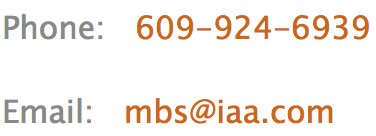Flight Instruction
Since its inception in 1974 the Soaring Tigers have provided a structured training program that has resulted in hundreds of members obtaining FAA ratings for Private Pilot, Commercial Pilot and Flight Instructor licenses. Members who are CFIGs have many years of glider flight instruction experience. Flight training typically provided from March through November on weekends and some selected weekdays.Applying for a student pilot certificate
Go toYou'll need it before you can fly solo. You don't need a student pilot certificate to take flying lessons. You are eligible for it if:
- You are at least 16 years old. If you plan to pilot a glider or balloon, you must be at least 14 years old.
- You can read, speak, and understand English
How long before solo?
The Soaring Tigers Sailplane Flight Training Syllabus is structured into eight lesson groups that are designed to provide the student with the flight maneuvers and knowledge that must be mastered before solo flight. 32 flights may be sufficient for the exceptional student to solo. However, different learning rates, time between lessons and varying weather conditions may necessitate more flights before solo. Generally, the more frequently a student can fly the quicker he can expect to solo. A more realistic assumption might be 40-50 flights before solo. But in some cases, this may take longer.Obtaining a private glider pilot license
A glider private license requires you to be a minimum of 16 years old and be able to read, speak, write, and understand English. You'll need to take an FAA written and oral test. The FAA also specifies the following practical requirements for the private glider rating for applicants with no power experience: 1) twenty flights in a glider including at least three training flights in a glider with an authorized instructor in preparation for the practical test that must be performed within the 60-days preceding the date of the test, and 2) two hours of solo flight time in a glider with not less than 10 launches and landings being performed.Applicants with at least 40 hours of flight time in heavier-than-air aircraft must: 1) Log at least three hours of flight time in a glider, 2) 10 solo flights in a glider, and 3) three training flights in a glider with an authorized instructor in preparation for the practical test that must be performed within the 60-days preceding the date of the test. FAR 61.109 (f) (2) allows the dual flights to count towards the 3-hour requirement.
The Soaring Tigers provides only aero tow instruction.
About how much does it cost?
Each student's situation is unique, so the cost may vary substantially. You should estimate about $2,000 of flight fees for solo and $1,200 of flight fees after solo to obtain a license. Add the club fees for whatever length of time is required to obtain a "ball park" cost. However, please note that these flight fees will vary based on the skill of the student or transition pilot.Who pays the cost of a tow?
1) Our Soaring Tigers club members with commercial glider ratings (and only those) may allow another member, prospective member, or guest as passenger to pay 100% of the tow costs directly for an out-and-back (not a cross-country) flight;2) Our members with private glider ratings may only share tow costs up to no more than a pro-rata basis (i.e., no more than 50% in a two-place 2-33) with such a passenger on an out-and-back flight, provided that the private pilot would have made that particular flight anyway. If such a person requests a flight, and a private pilot agrees, that pilot may not allow that person to pay any costs whatsoever;
3) If two private pilots or two commercial pilots or one private/one commercial pilot wish to share tow expenses on a single flight, please contact me. The answer will depend on who will be PIC, or whether that responsibility will be changed during the flight;
4) No other form of direct or indirect payment (including non-cash items) of any kind is allowed in the case of commercial or private pilots. These regulations do not apply to CFIs giving legitimate flight instruction; otherwise, glider CFIs fall into the same category as other commercial glider pilots.
These regulations may seem questionable to some of you, but we assure you that the FAA takes them very seriously.
